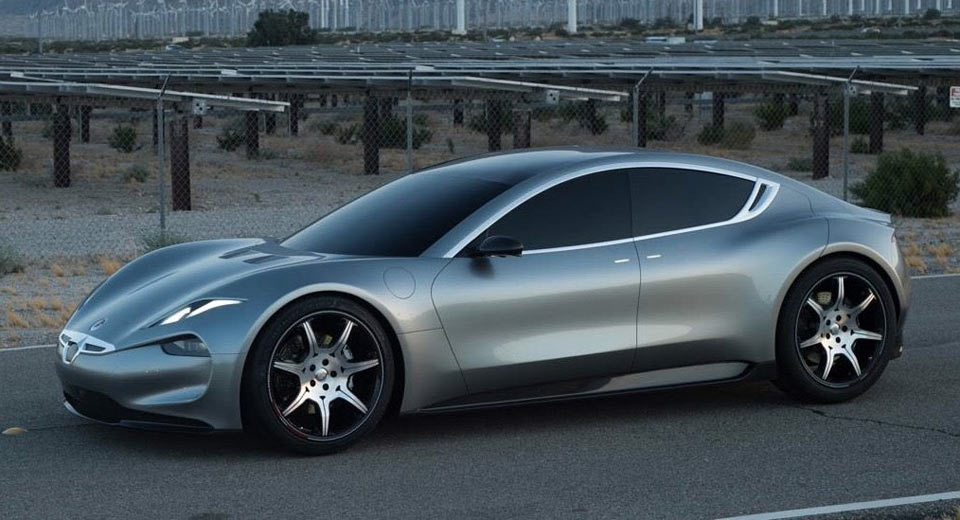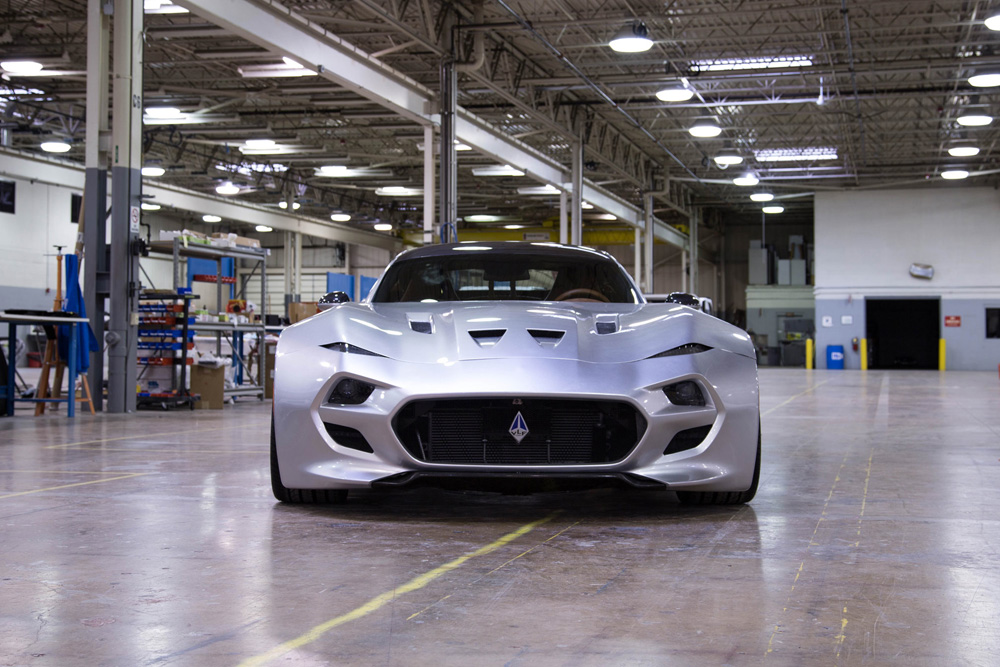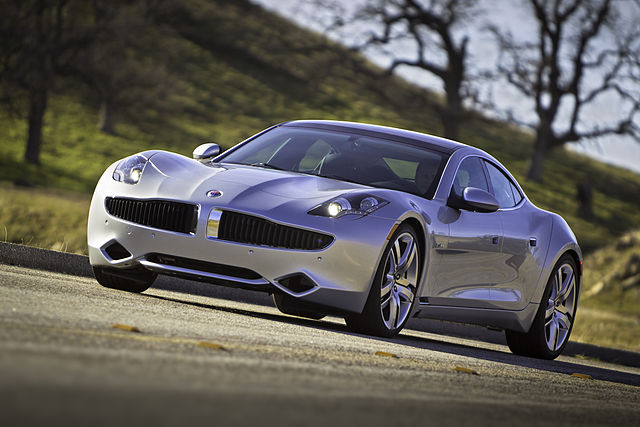"The recession nearly killed the old Detroit, but it had been in decline for decades. Now a bunch of new Californian carmakers, technology companies and investors that think they can do things better: that they can build cars in America "

Henrik Fisker
How much do we know about Henrik Fisker and his latest creations? We decided to find out more.
Henrik Fisker is clearly not a man short of ego.
Just go and check out the homepage of its eponymous website, and see what image is the first that greets you. Not a photo of one of the gorgeous cars which Mr Fisker has designed — from the Aston Martin V8 Vantage to the cars bearing his own name — but a photo of the man himself, dressed in white, reclining in a chair. It’s half Bond villain, half Liberace.
Fisker is not your usual kind of guy, though. Here is a man who left what is surely one of the best jobs in motordom, that of chief designer for Aston Martin, and tried to revolutionise the car world by designing and building his own-brand super-saloon, which used an electric range-extender powertrain. The Fisker Karma was way ahead of its time, so much so that it flopped, and Fisker was forced out of his own company.
He’s back with a bang, though, designing both the astonishing Force 1 supercar (which will shortly be shown in convertible form) and a new electric car, the Fisker EMotion. The Force 1, with its massive, thirsty Viper V10 engine, seems almost an anomaly in Fisker’s recent, eco-friendly career, but as he told Influx, it’s all about having variety…
“Well you know you can’t eat salad every single day, once in a while you want a nice big steak and a piece of a apple pie and I think that this is what the Force 1 is really about. It’s really about everything we fell in love with when we think about cars; the brutal force of the engine, the interaction with the mechanics, the sound, the smell, everything else” said Fisker. “I think cars are cars, and I’ve designed many different cars in my life and I still think we’re going to see both gasoline and electric cars and hybrids for a long time. So for me, I don’t think it’s contradictory to say that while you might sometimes want a big steak, you aren’t going to eat healthy most of the time. But I believe in a healthy mix of things.
“It’s a little different. The traditional coach-build that I had done in the past, we didn’t change quite as much engineering wise. This vehicle I think it almost more like platform engineering. So we did have to engineer quite a lot, because not only did we have to change every single body panel, we changed the cut lines and more. So when people say it’s just a re-body, well that’s a very open word because there’s a lot of engineering going into it, including incorporating an active suspension system with a different rack width and different aerodynamics. So quite a lot of work goes into it but for me it was really about how fast can you bring a car to the market, a fun idea, with a business case, and I think today it’s very hard to find a business case for a car where you’re only going to build fifty or a hundred or even a couple of hundred, unless there is pre-existing mechanics in it, or unless you charge a couple of million dollars for it. For us it was really about finding that medium where you say hey, what if you do something where you can actually bring a car to market for about USD£300,000 and really offer something different in that category. For me it was about, looking specifically in America, we really didn’t have an American GT car in that segment, so it was something for me that was fun about doing a car that I kind of imagine people would have made in the fifties or sixties. When you read back to those stories where a race mechanic created something and a designer designed the car pretty freely… That’s how this car was, all of the mechanics on this car really came from a racing Viper chassis that is raced by Ben Keating out of Texas, and he really brought all the technology with him, and it’s just phenomenal – phenomenal to be able to do that without any marketing groups or accountants or anything. We just kind of did it.”
The new EMotion is rather closer to the likes of the half-electric Karma, though. It uses what Fisker describes as cutting edge new battery technology to achieve a 161mph top speed and a 400-mile one-charge range.
“Fisker Inc. will spearhead a revolution in electric cars that will disrupt the electric vehicle market and change the world,” says the man himself, who serves as Chairman and CEO of the company. “Both the technology and the market are more mature now than when we first started out as pioneers in the electric vehicle industry, and our new vehicle will be the most innovative and cutting-edge electric car ever created.”

Technology is one thing. Building a new brand from scratch is quite another, as Fisker knows to his own cost. Tesla has managed it, but others, even supposedly well-funded others such as Faraday Future, are struggling to be heard in a market that is fast fragmenting. How can Fisker, both company and man, hope to take on the likes not merely of Elon Musk, but of Porsche, Ford, VW, Audi, GM and so many others?
“I think that when you develop something that is completely new and that no-one has ever done before, you obviously are in the middle of a journey that is in itself incredible, because you never know what’s around the corner or behind the next door. And that’s really how it was to develop the Karma. At the time we were so on the edge of the new technology, that unfortunately we had a battery company go bankrupt and that sadly was detrimental. I don’t know how ahead of its time the Karma was, I think it was about of its time actually, but because of the battery problem we weren’t able to ride on that wave and explore it, which was very sad. But I think that these type of cars, whether its plug-in hybrids or electric cars are absolutely going to be part of our lives, and part of our selection of cars, so it’s possible that in the future I’ll be designing a car like that again. But I think that the Karma kind of opened the way for some of the bigger car companies to start developing plug-in hybrids so I’m very pleased with that.
“I think people have actually given a very clear signal that for the first time in the history of car making people are actually willing to go out and buy a car brand that they’ve never heard of, or even from a brand that has never previously made a car” he says. “I think things that are happening at Apple and Google are indicators that we’re having a new revolution in the car industry, and I could very well imagine in ten years the brands that you and I grew up with, some of them won’t even exist in ten years because they just don’t appeal to car buyers any more. For our generation that’s maybe unimaginable, but I think that for the new generation it’s not hard to imagine driving a car from a brand that doesn’t even exist today. I think there’ll be a huge change, and hopefully I’ll be part of that in some way.
“I think they care about the design, the price and the big thing; the brand. The brand will be defined around ultimately what type of product it is and how it’s brought to market. I think there will be less emphasis on detailed engineering specs that our generation grew up with – you know, how many horsepower, what kind of suspension, most of the new generation don’t care or know about this and it’s not important to them. I do think that we’re probably a little bit in a vacuum where the car industry has been almost confused and has kind of strangely alienated their own buyers by not really making too much excitement for the new generation of car buyers, and that generation, already having this wonderful technology available, has had less interest in cars. I think though that’s only a temporary thing. I think that ultimately the young generation which has grown up on iPads, I bet you in 10-15 years, it will be incredibly exciting for them to actually get into a vehicle and actually drive themselves. So as much as you might have autonomous cars, there’s nothing in this world that’s as exciting, with as much power and freedom as driving a car.
“Those who understand how to make the car exciting again will be the winners.”

CLICK TO ENLARGE














